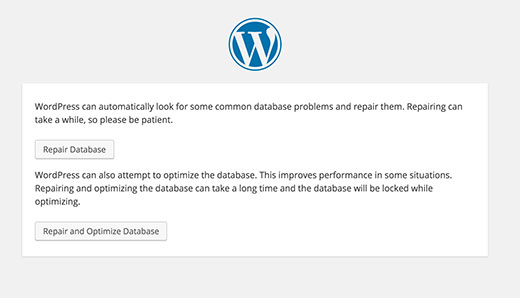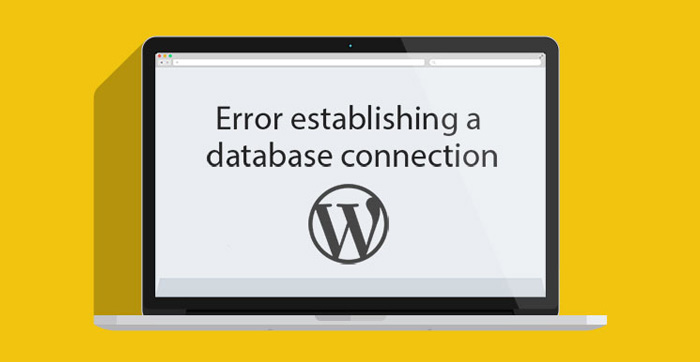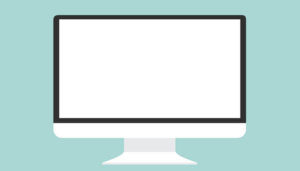Error Establishing a Database Connection is one of those curses that could be caused by many reasons. In this article, we will show you how to fix the error establishing a database connection in WordPress by compiling a list of solutions all in one place.
Note: Before you make any database changes, make sure you have sufficient backups.
Why do you get this error?
You are getting this error because WordPress is unable to establish a database connection. Now the reason why WordPress is unable to establish a database connection can vary.
We’re createad a list with the several of famous issues:
- Your database login credentials are wrong or have been changed.
- Your database server is unresponsive.
- Your database has been corrupted.
Majority of the times this error happens because of some sort of server error however there could be other factors as well. Lets take a look at how to go about troubleshooting this problem.
Does the problem occur for /wp-admin/ as well?
First thing you should do is to make sure that you are getting the same error on both the front-end of the site, and the back-end of the site (wp-admin). If the error message is the same on both pages “Error establishing a database connection”, then proceed onto the next step. If you are getting a different error on the wp-admin for instance something like “One or more database tables are unavailable. The database may need to be repaired”, then you need to repair your database.
You can do this by adding the following line in your wp-config.php file. Add it just before ‘That’s all, stop editing! Happy blogging’ line wp-config.php.
define('WP_ALLOW_REPAIR', true);Once you have done that, you can see the settings by visiting this page:

Remember, the user does not need to be logged in to access this functionality when this define is set. This is because its main intent is to repair a corrupted database, Users can often not login when the database is corrupt. So once you are done repairing and optimizing your database, make sure to remove this from yourwp-config.php.
If this repair did not fix the problem, or you are having trouble running the repair then continue reading this article as you might find another solution to work.
Checking the WP-Config file
WP-Config.php is probably the single most important file in your entire WordPress installation. This is where you specify the details for WordPress to connect your database. If you changed your root password, or the database user password, then you will need to change this file as well. First thing you should always check is if everything in your wp-config.php file is the same.
define('DB_NAME', 'database-name');
define('DB_USER', 'database-username');
define('DB_PASSWORD', 'database-password');
define('DB_HOST', 'localhost');Remember your DB_Host value might not always be localhost. Depending on the host, it will be different.
Some folks suggested that they fixed their problem by replacing localhost with the IP. It is common to see this sort of issue when running WordPress on a local server environment. For example on MAMP, the DB_Host value when changed to the IP may seem to work.
define('DB_HOST', '127.0.0.1:8889');IP’s will vary for online web hosting services.
If everything in this file is correct (make sure you check for typos), then it is fair to say that there is something wrong on the server end.
Check your Web Host (MySQL Server)
Often you will notice this Error establishing database connection when your site gets swarmed with a lot of traffic. Basically, your host server just cannot handle the load (specially when you are on shared hosting). Your site will get really slow and for some users even output the error. So the best thing you should do is get on the phone or livechat with your hosting provider and ask them if your MySQL server is responsive.
For those users who want to test if MySQL server is running yourself, you can do a few things. Test other sites on the same server to see if they are having the issue. If they are also getting the same error, then most definitely there is something wrong with your MySQL server. If you do not have any other site on this same hosting account simply go to your cPanel and try to access phpMyAdmin and connect the database. If you can connect, then we need to verify if your database user has sufficient permission. Create a new file called testconnection.php and paste the following code in it:
<?php
$link = mysqli_connect('localhost', 'username', 'password');
if (!$link) {
die('Could not connect: ' . mysqli_error());
}
echo 'Connected successfully';
mysqli_close($link);
?>Make sure to replace the username and password. If the script connected successfully, then it means that your user has sufficient permission, and there is something else that is wrong. Go back to your wp-config file to make sure that everything there is correct (re-scan for typos).
If you cannot connect to the database by going to phpMyAdmin, then you know it is something with your server. It does not necessarily means that your MySQL server is down. It could mean that your user does not have sufficient permission.
So if you get the access denied error in either connecting to your phpMyAdmin or through testconnection.php results, then you should contact your host right away to get them to fix it.
How to fix redirecting to old site url?
It is important to note, that these may not work for you. Use at your own risk and make sure that you have sufficient backups if anything goes wrong.
Sometimes your url in database and url in real site can be different. You should to run the next script in your phpMyAdmin to change url in your database on the correct url:
UPDATE wp_options SET option_value='YOUR_SITE_URL' WHERE option_name IN ('siteurl', 'home')Make sure to replace YOUR_SITE_URL with the actual url example: https://www.your-site.com. The wp_options will be different if you have changed the default WordPress database prefix.
In conclusion
We hope that this article was useful for you and your site! We wish you not to meet this error again. Good luck!





